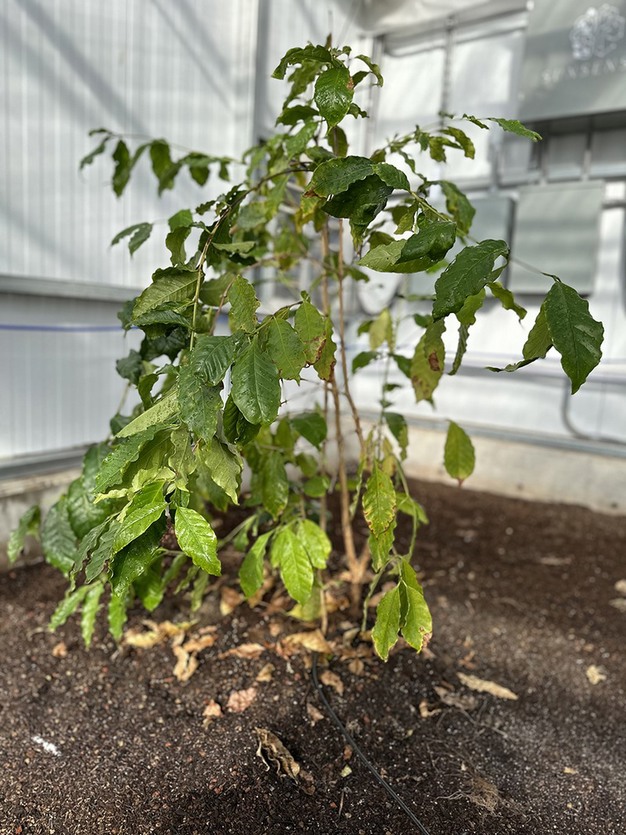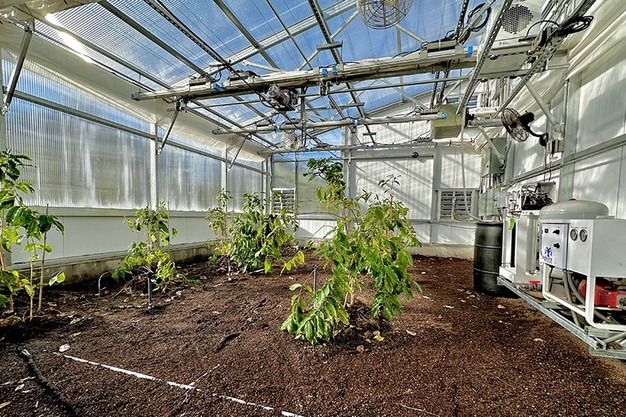Is it possible to engineer the perfect cup of coffee? This question drives Justin Laird, a color scientist in Northern California, who is exploring this quest with the aid of his new Ceres greenhouse. Justin’s journey began not just with buying his own roaster but with a bold decision to grow his own coffee plants. Unfortunately, coffee plants don’t grow well naturally in the continental US. They prefer cool to warm tropical climates, like those found in regions closer to the equator. This challenge led Justin to the Ceres BackYard Kit, a controlled environment solution designed to help replicate the ideal coffee-growing environment. We contacted Justin to check in on his adventurous new hobby and learn more about his greenhouse story.
Justin’s inspiration was sparked during a business trip in Asia, where he continually encountered discussions about the shrinking equatorial band, a vital coffee-growing region. This inspired him to research whether one of the world’s most valuable, but also diminishing, crops could be grown in a controlled environment – specifically in his backyard. Despite the scarce information on indoor coffee cultivation and his own novice status in gardening (he admits his wife is the one with the green thumb), Justin was undeterred. He started with a self-built 3.5’ x 2’ miniature greenhouse complete with sensors, a data logger, and a solar panel to grasp greenhouse mechanics, later moving his plants to a more robust 8’ x 7’ kit that had better ventilation and insulation. With his second greenhouse, he experimented with more advanced sensors and venting methods but faced challenges with temperature control living in San Jose, California, where the sun can get intense.
Realizing he needed a more high-tech solution, Justin discovered and chose Ceres for its pre-engineered design that met his needs. He decided that his 18 x 24’ BackYard Kit greenhouse should be built on another piece of land he owns along the Northern California coast, where the climate is more suitable for coffee cultivation, staying between a cooler 40-60°F year-round. The SunSense™ Controller installed in the greenhouse allows Justin to remotely monitor and control the environment, a technology that’s helpful since he lives four hours away from his greenhouse. The controller also allows him to “nerd out” on his growing data in order to grow more efficiently and successfully.

Justin’s engineering approach extends beyond the greenhouse. He sourced his first coffee seeds from Hawaii and then collaborated with a soil lab in California to replicate the optimal soil conditions for his growing environment. And let’s not forget the roasting process. Justin uses a high-tech coffee roasting machine that commercial roasting companies use to test different roasting methods. For this part of the process, he’s been using the roaster to target a roasting profile specific to his own personal taste.

In December 2023, Justin had only produced a handful of beans, but he was quick to add that it takes a few years for coffee plants to produce their first full crop. He hopes that by his second year growing in the Ceres greenhouse, he will have a crop big enough to supply his daily coffee habit. If he is successful in this, he hopes to increase his bean production and supply local roasters so customers can enjoy an entirely local cup of coffee. He also aims to experiment with cacao so he can engineer another well-loved ingestible – chocolate. His journey, while personal, also aims to demonstrate a sustainable, enclosed approach to growing coffee, a necessity as traditional coffee lands diminish.
For more information:
Ceres Greenhouse Solutions
www.ceresgs.com

